A “Prayer” that has endured since the Warring States Period.
“Miyajima Odori” - a dance of quiet sorrow
Every year on the evenings of August 17 and 18, “Miyajima Odori” dancing is performed on Mikasa-no-Hama, the approach to Itsukushima Shrine. This event, which has been handed down for more than 500 years, was designated as an Intangible Folk Cultural Asset of Hatsukaichi City in 2007.
「Miyajima Odori originated during the Warring States Period.
According to Tanamori Fusaaki Oboegaki, a memorial written by Tanamori Fusaaki, a Shinto priest of Itsukushima Shrine, warriors from the province of Iyo who had invaded Miyajima and committed numerous violent acts drowned in a storm on their way home around 500 years ago.
According to Geihan Tsushi and other sources from the Edo period (1603-1867), following this incident, the ghosts of samurai began to bring misfortune to ships crossing the sea, so Buddhist memorial services were held to comfort the spirits of the deceased.


That is what sets it apart from modern “Bon-Odori” (Lantern Festival dancing).
Miyajima Odori is believed to have originated out of the Buddhist incantation using chanting, drumbeating, and dancing that began there.
The dancers wear black crested haori jackets and braided hats to hide their faces. In the brisk air, they point to the sky and then to the earth, alternately raising and lowering their left and right hands, while slowly shuffling forward and turning. Said to have been influenced by court dance and music, the dancing is slow and graceful, but the hands and feet are in constant motion. The repetitive motion of crossing one’s hands seems to represent a form of worship. The quiet dance, which entails no hand clapping, is performed in rhythm with the mournful Miyajima Hakkei (Eight Views of Miyajima) song, shamisen, and taiko drums echoing on the beach at dusk. Foreign tourists watch the live music and graceful dances with a sense of wonder.
The unique Miyajima Odori,
which started as a mourning ritual.
We spoke with members of the Miyajima Performing Arts Preservation Society, which strives to pass on precious performing arts.
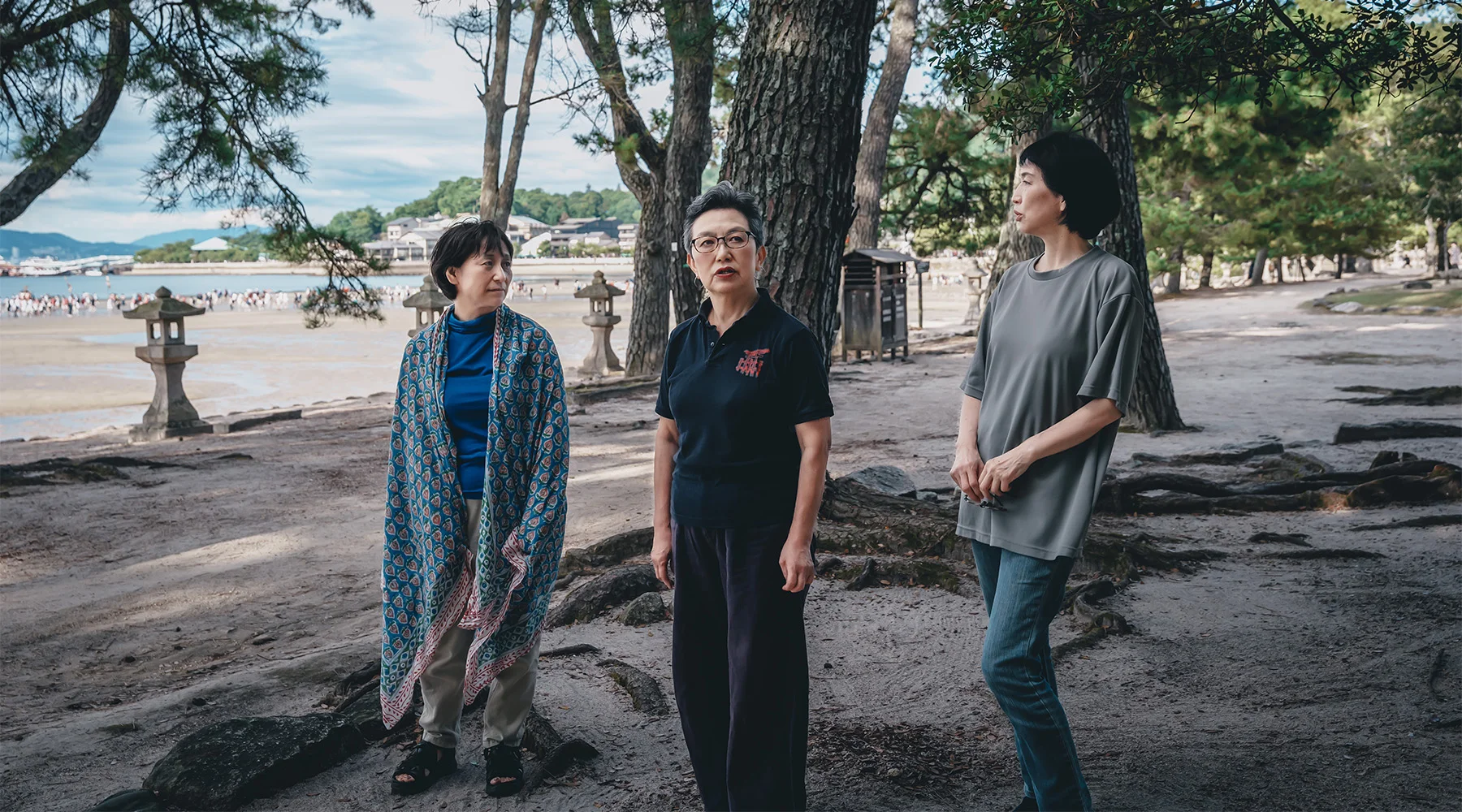
Miyajima Performing Arts Preservation Society was established in 1963 to preserve the cultural value of this historic event for future generations. Currently, it has around 10 active members, led by Yoshie Okada, the third generation president, who was born and raised on Miyajima. According to Ms. Okada, “Everyone takes on multiple roles in order to preserve the dance, the shamisen, the drums, and the song. There used to be a lot of men, but now they account for less than half.” You cannot become better at traditional arts overnight, and their members are getting old. Activities to maintain and promote Miyajima Odori are not easy.
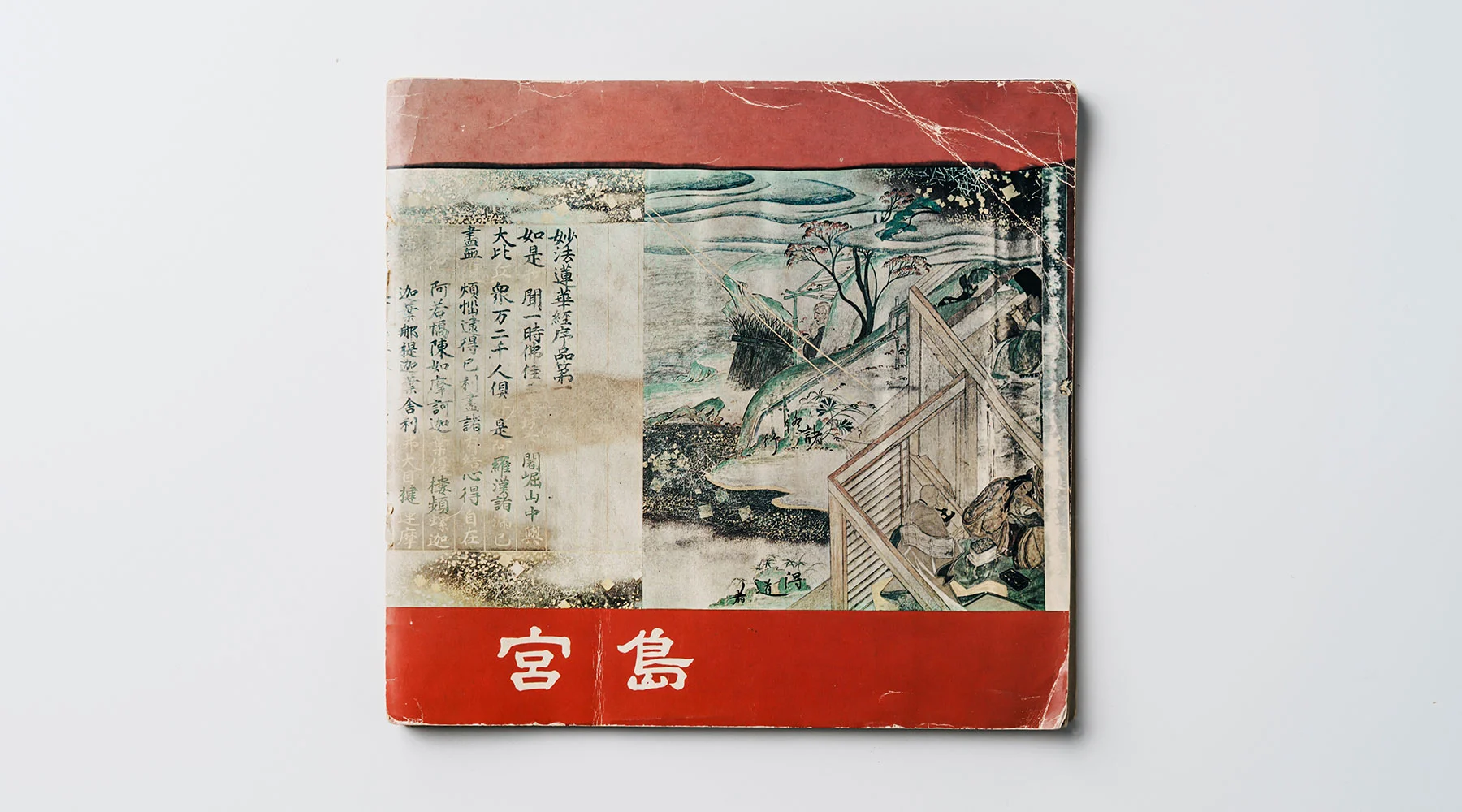

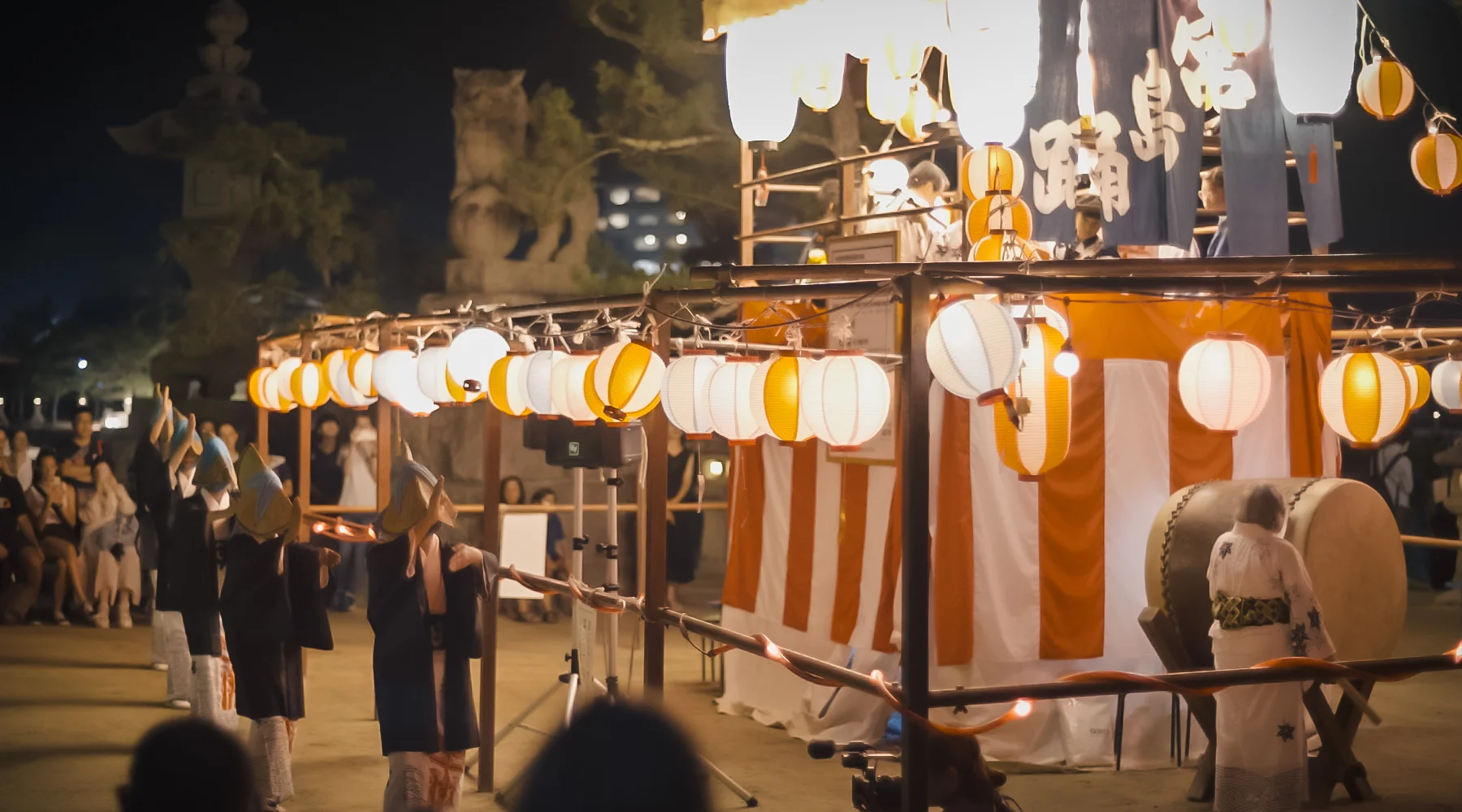
The sound of the shamisen etched
deep in the memory,
dancing moves ingrained in the body.
Behind the Miyajima Odori dance that has been handed down to this day is actually a partnership with local schools. The dance has been taught in classes for about 50 years, and most of the islanders learned it when they were children. Ms. Okada herself had been away from her hometown for about 10 years, but on the evening of August 17 following her return to Miyajima, she went to the beach as if drawn by the sound of the shamisen. “I remember the dance from memory, so my body naturally moved… Before I knew it, I was the president of the Miyajima Performing Arts Preservation Society (laughing).”
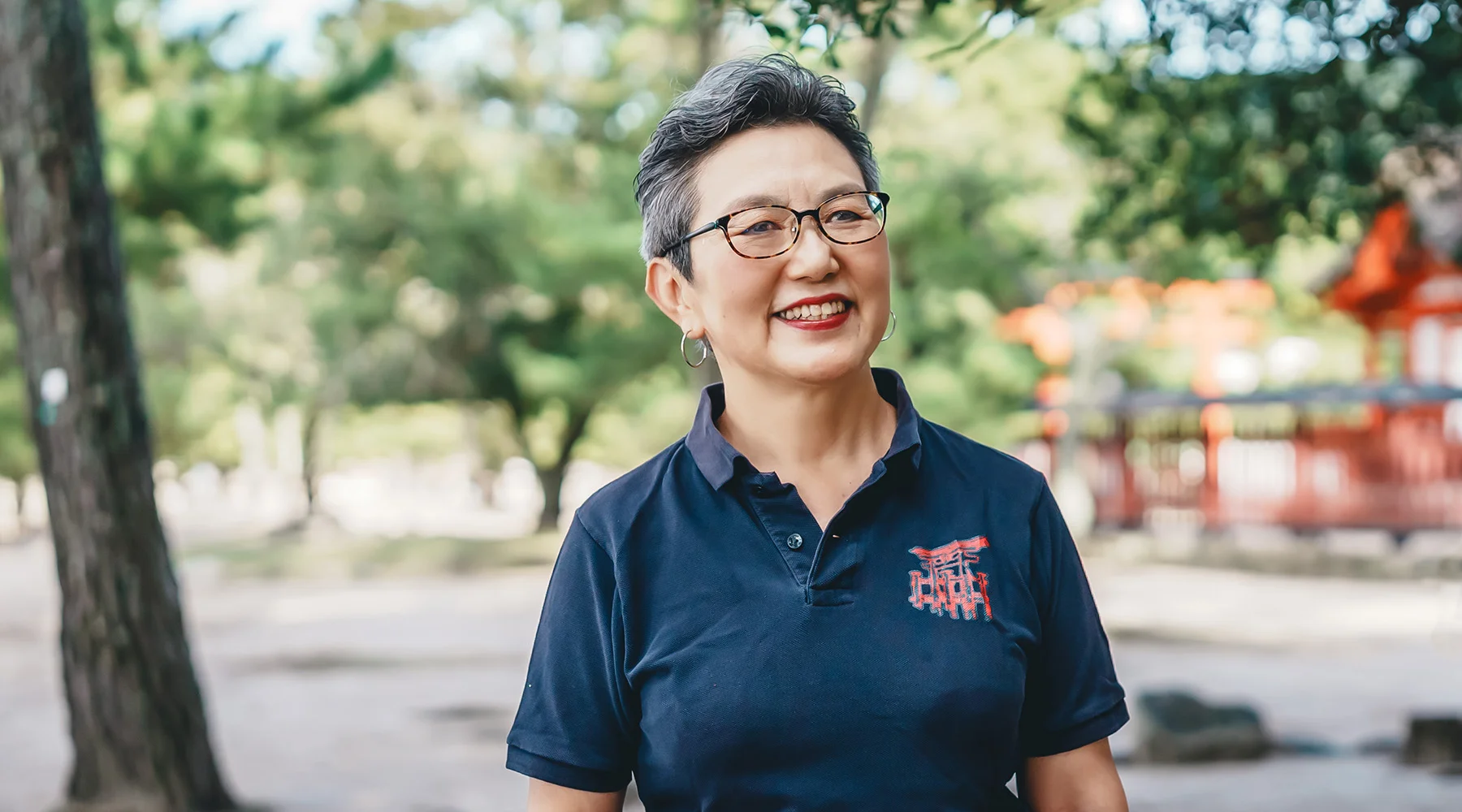
Satomi Kamada, who teaches dance and taiko drumming, was also born on Miyajima. She too returned to her hometown after spending some time away. She started performing Miyajima Odori, which had become ingrained in her body, to tourists and other visitors, and it was a natural progression for her to join the Miyajima Performing Arts Preservation Society.
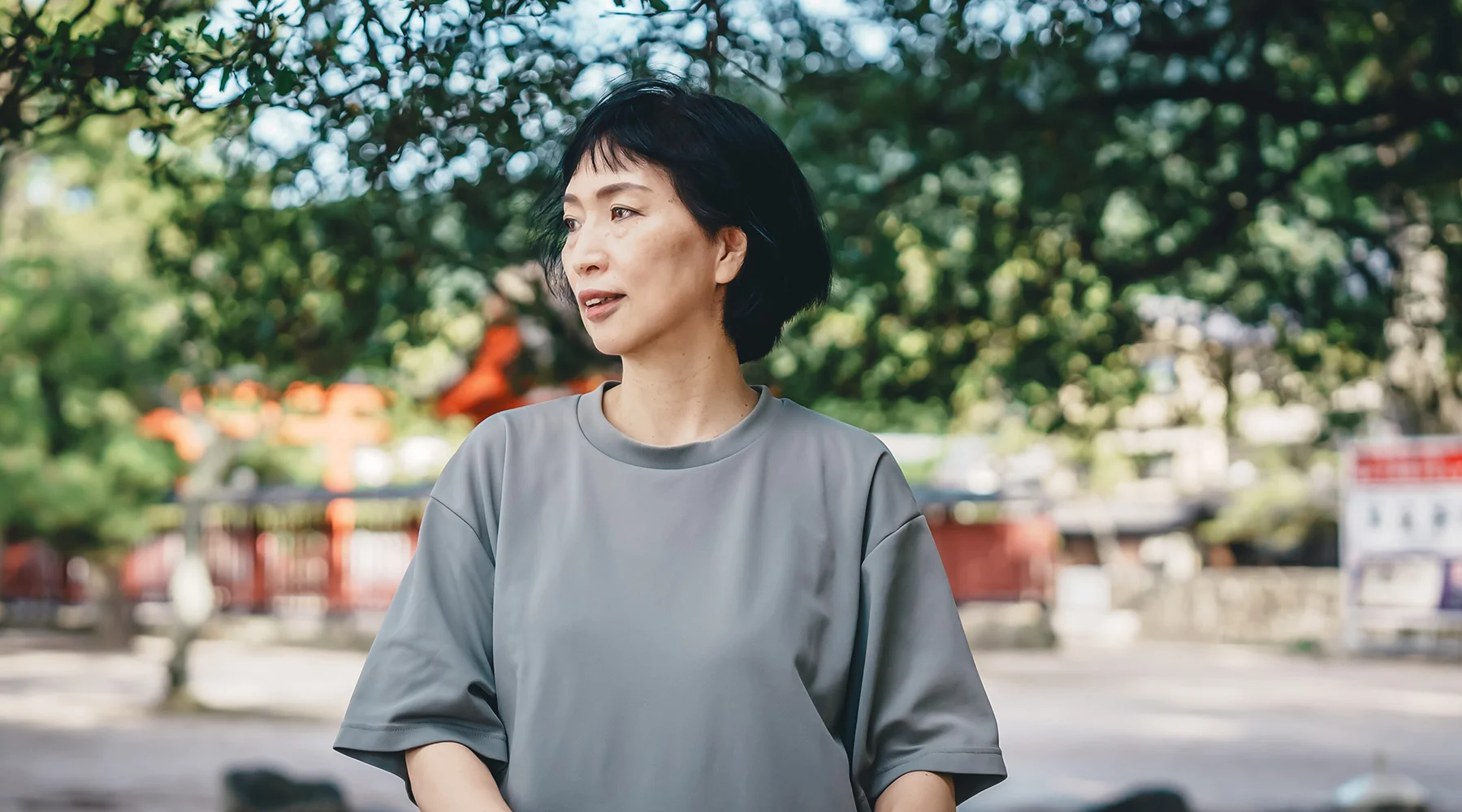
Meanwhile, Yuko Yamamura, who plays the shamisen, became involved with Miyajima Performing Arts Preservation Society as head of the women’s department of the Society of Commerce and Industry.
“I play the shamisen on the yagura watchtower during the performance, so I have a good view of the dancing. The moment I hear the sound of the feet shuffling together, I am moved by the beauty of the dance.”
Ms. Yamamura also began visiting Miyajima Gakuen (an integrated elementary and junior high school) to help with classes. Since then, she has devoted herself to teaching and reworking musical scores to suit individual children. Fifth graders sing, sixth graders play the shamisen, and all perform the dance.
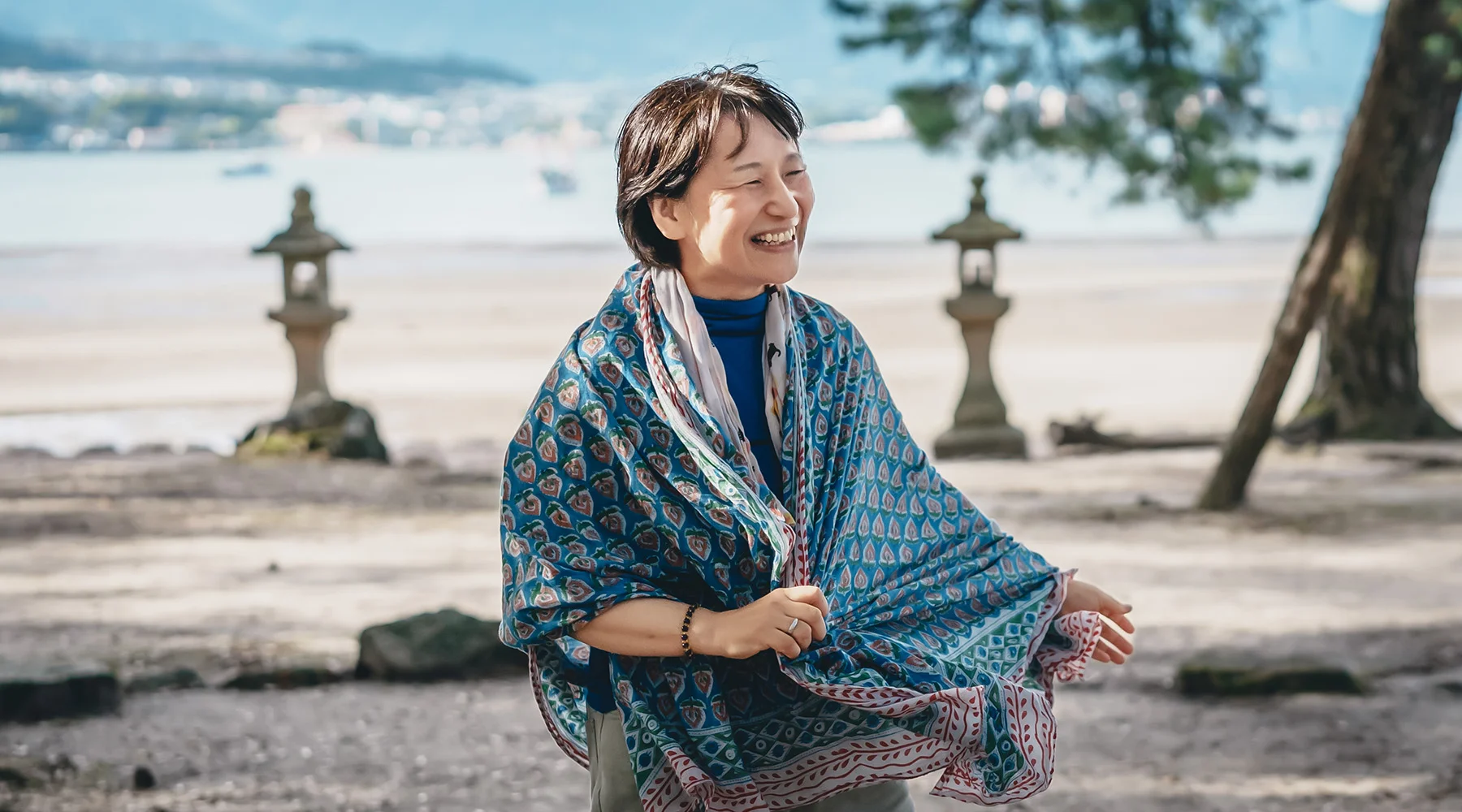
These traditional events are built
on the people’s lives.
“For those who were born and raised on Miyajima, it may seem natural,” says Ms. Yamamura, “but for me, coming from another prefecture, it’s amazing that there are festivals throughout the year and that people learn the shamisen in elementary school.” Similarly, according to Ms. Kamada, “It was only after I left Miyajima that I realized again that some aspects of life on the island were unique, and that life on Miyajima was tied to various traditional events according to the lunar calendar.” “I feel that the pace of change on Miyajima is so fast these days that the charm of the island is being eroded,” says Ms. Okada.
It is precisely because people live on Miyajima that events unique to the island have been born and handed down as part of the culture. If this culture were to cease, Miyajima would no longer be Miyajima. That is why the members of Miyajima Performing Arts Preservation Society say, “We want to cherish the performing arts that have lived on this island.”
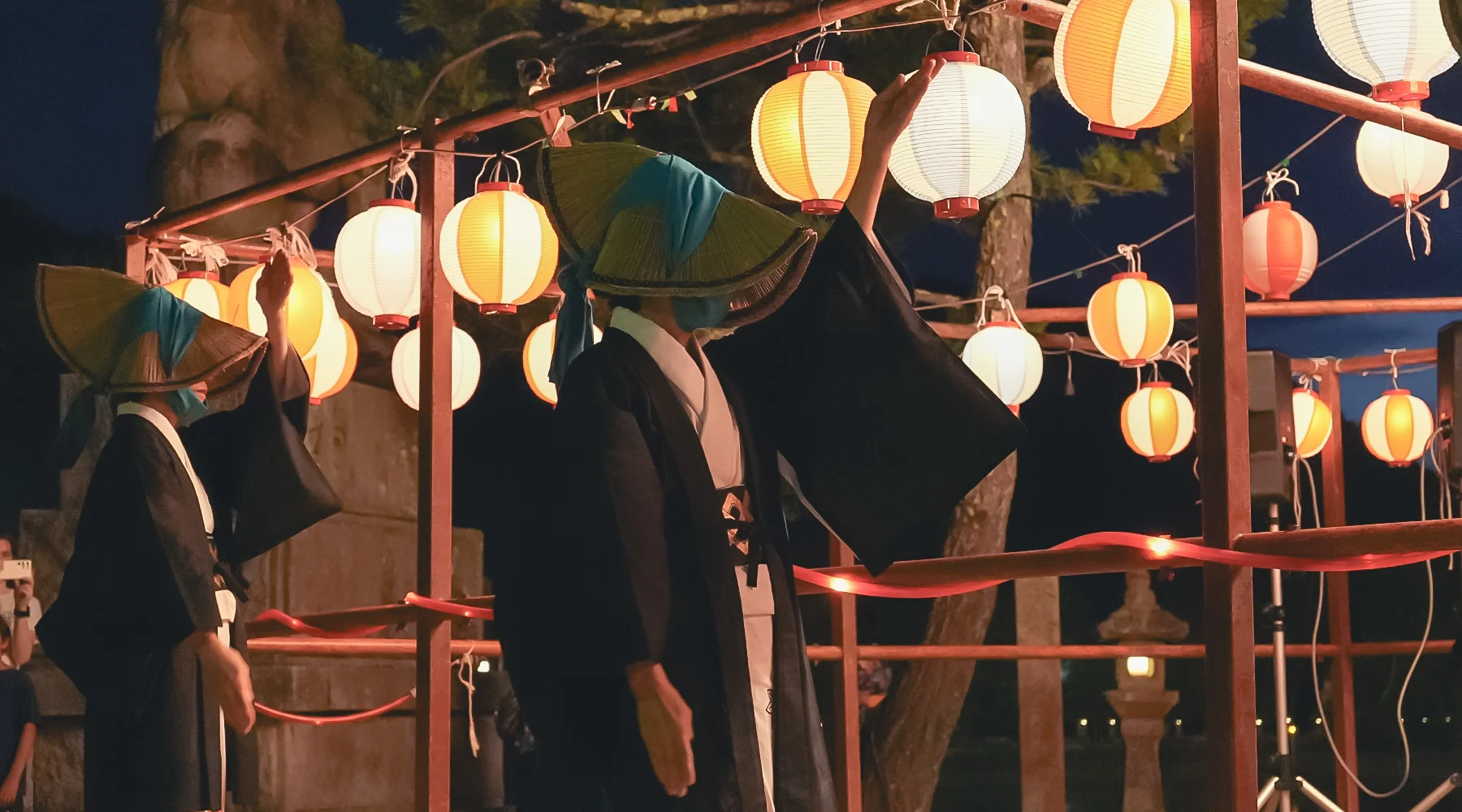
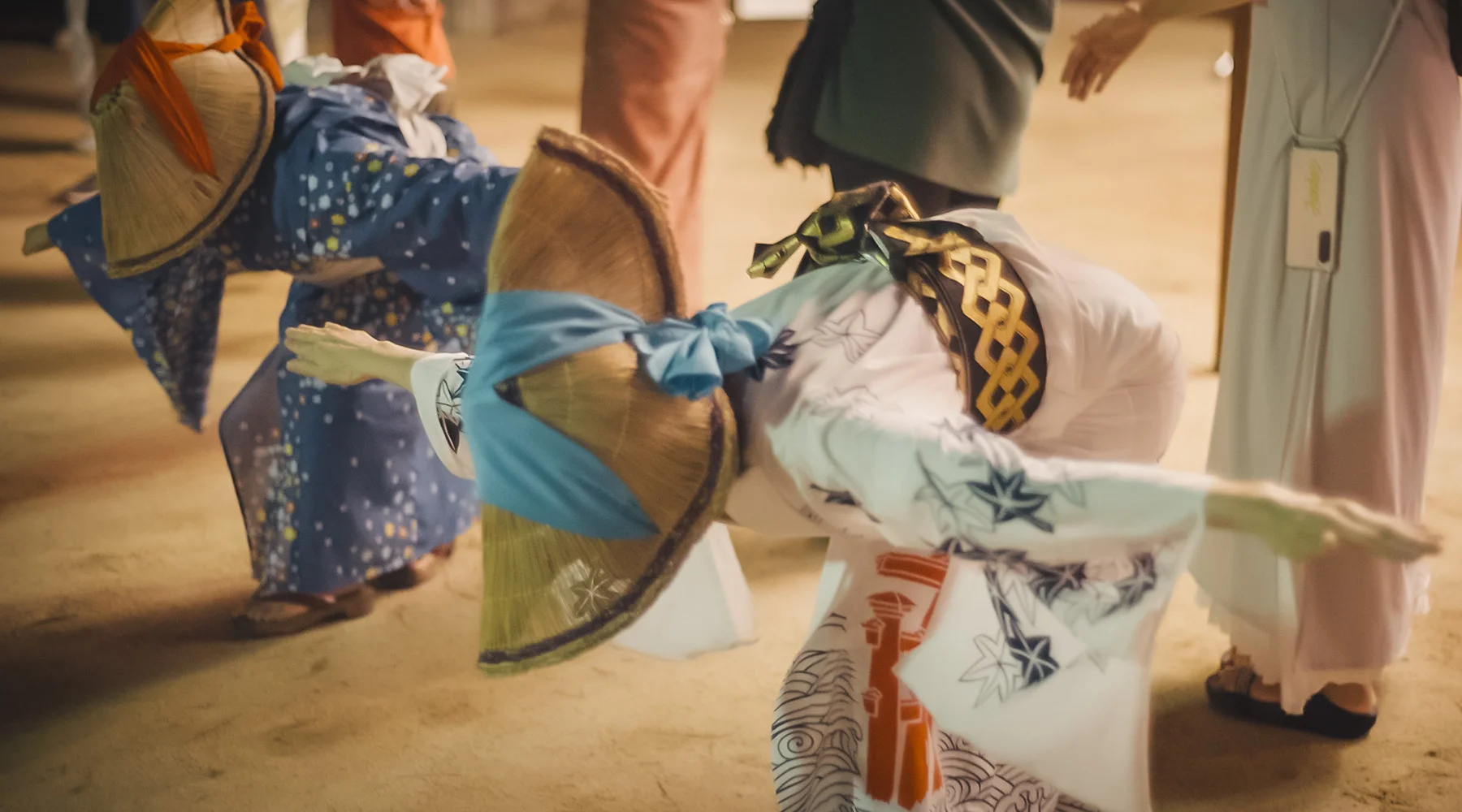
It is danced together with Miyajima Odori.
Having a history of more than 100 years, this too has been preserved by Miyajima Performing Arts Preservation Society.
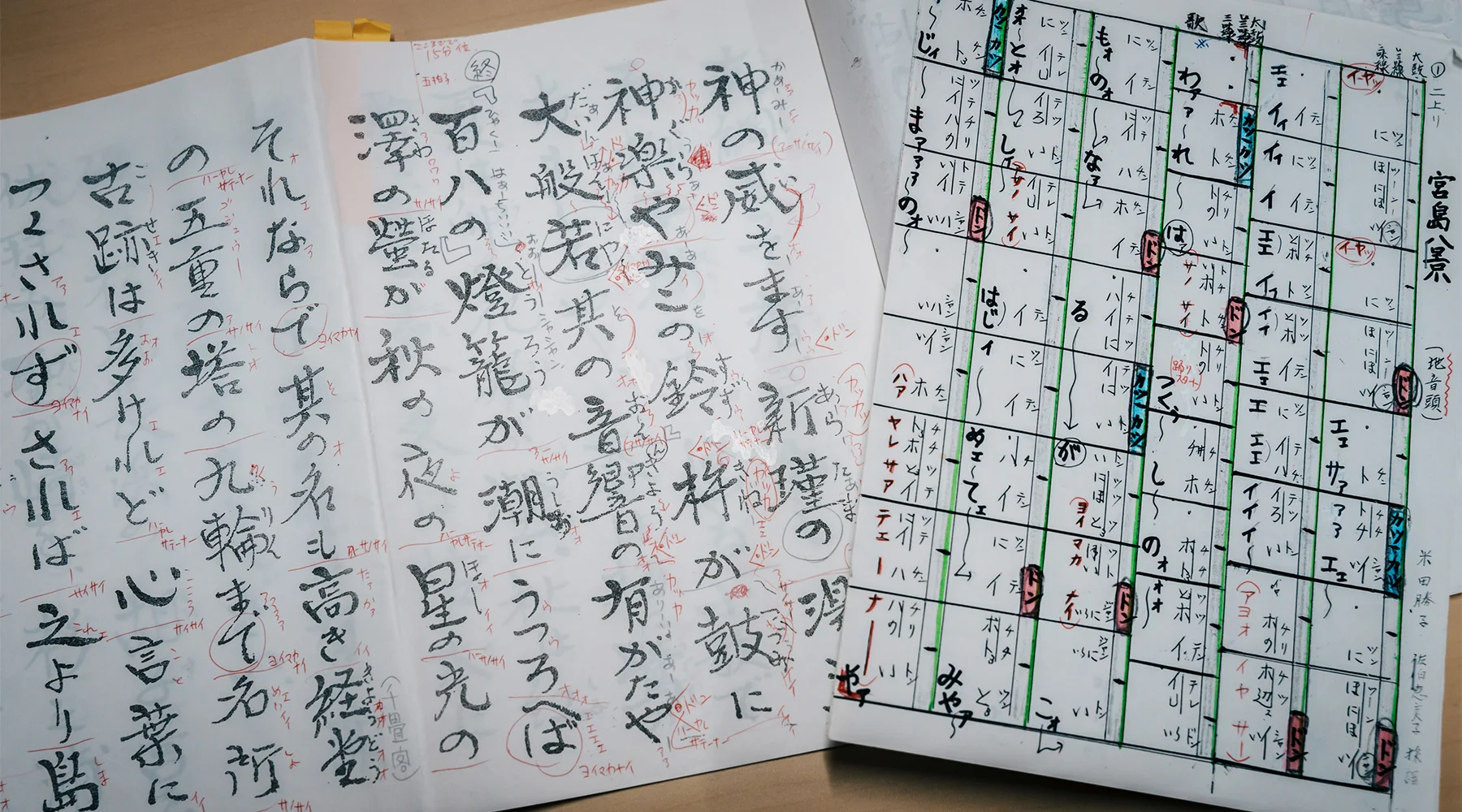
A “Prayer Dance” that has been passed
down to future generations
since the Warring States Period.
There is rare value in the fact that this dance has been passed down on Miyajima since the Warring States period 500 years ago. Over the years, dancers, singers, and players have passed it on with appreciation for the depth and beauty of this history. It is included in classes at schools on the island, and the Miyajima Performing Arts Preservation Society teaches Miyajima Odori to elementary and junior high school students so that they can enjoy the dance and take pride in it. The children also learn about the historical value and sentiment of the dance.
In addition, the members of Miyajima Performing Arts Preservation Society are aging, and there is a shortage of dancers and performers. The group is facing a crisis of survival. Even so, Ms. Okada says enthusiastically, “I want to somehow preserve this wonderful traditional art form. First of all, we will continue to teach the children. Of course, we also want to promote Miyajima Odori to people outside the island and tourists, and hope that they will also participate in the dancing. It is important to continue our activities. I believe that this will bear fruit one day in some form or another.”
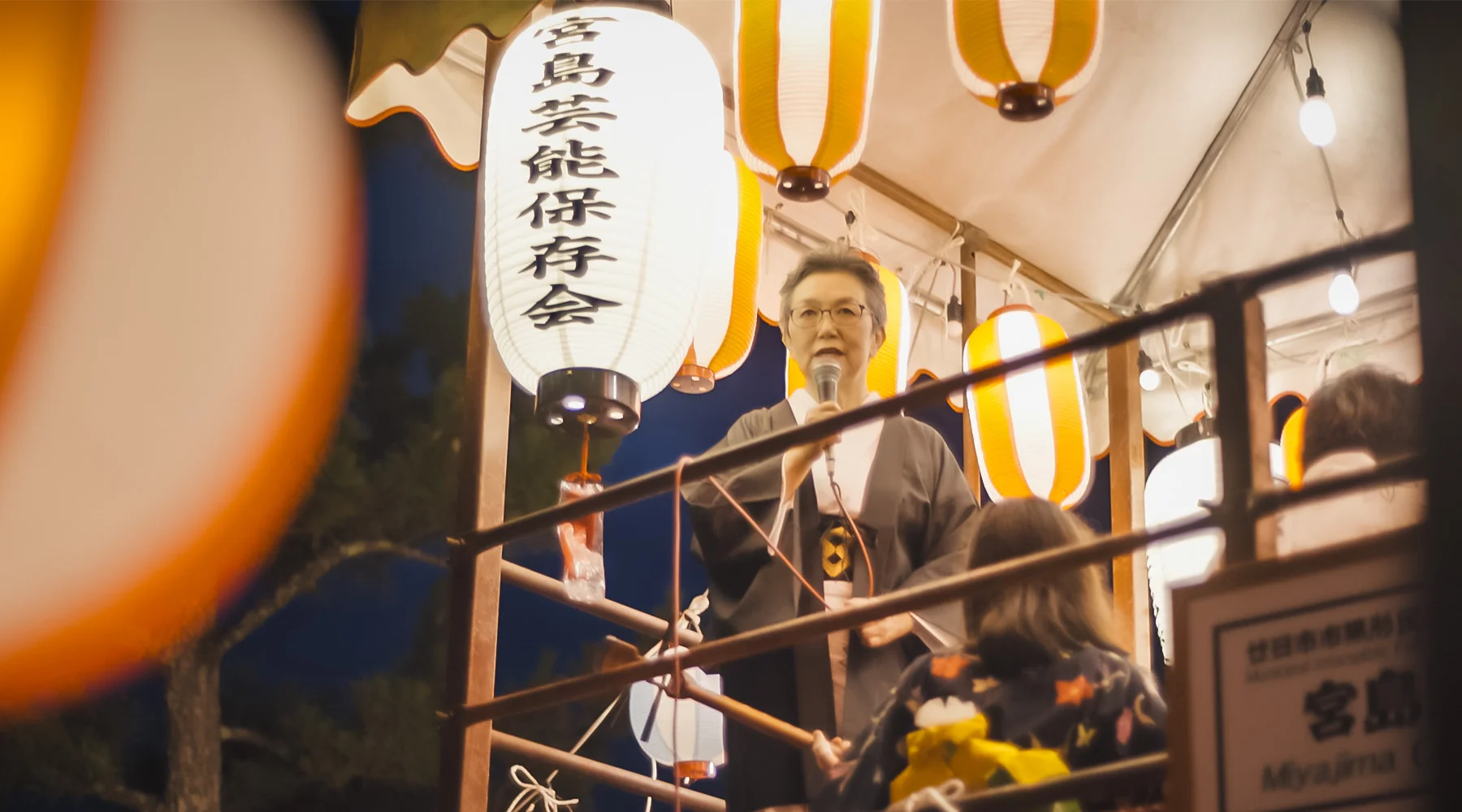
- Miyajima Performing Arts Preservation Society
- Established on June 25, 1963 for the purpose of carrying on and preserving Miyajima Odori.
At events such as the “Miyajima Odori Evening” held by Miyajima Performing Arts Preservation Society, general participants can join the circle and dance together. In order to expand membership, inquiries from interested parties are welcome at any time.
- Miyajima Performing Arts Preservation Society Secretariat
- TEL 0829-44-0757 (KIYOMORI-CHAYA)
- Facebook page
